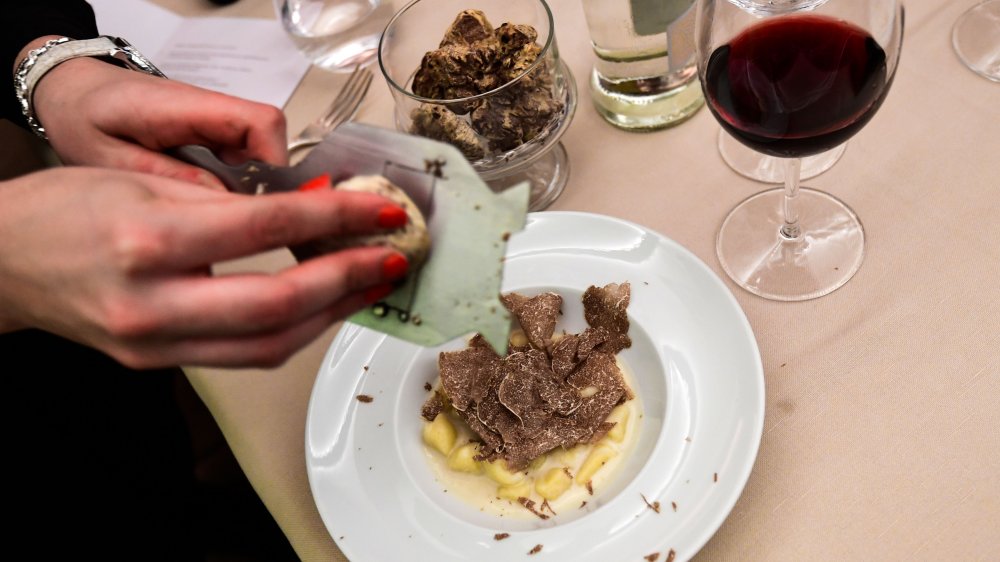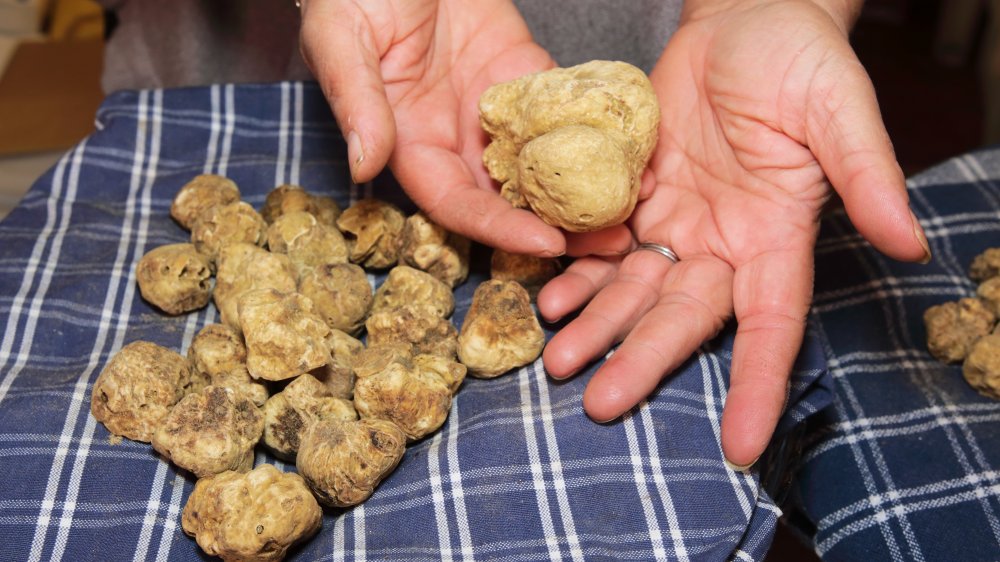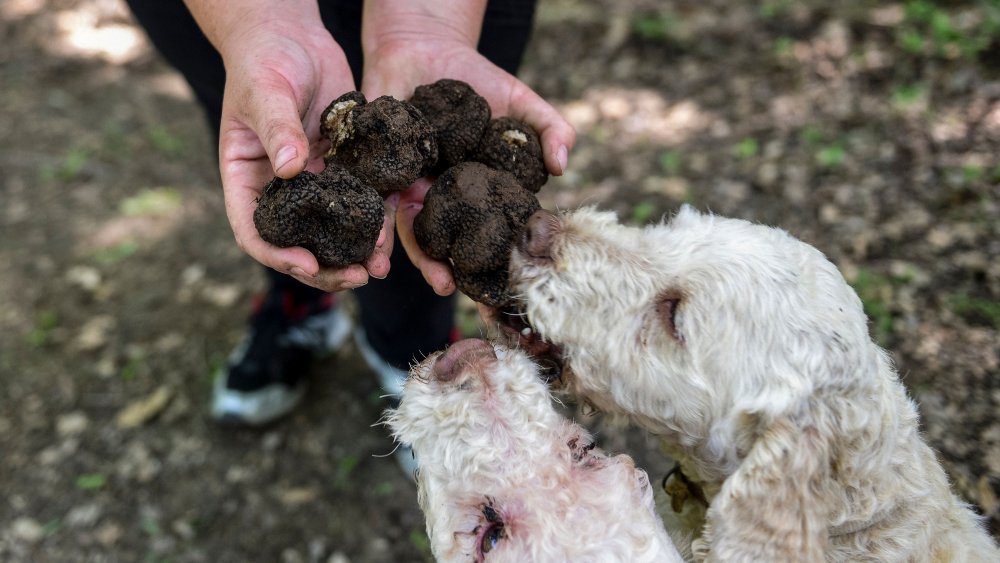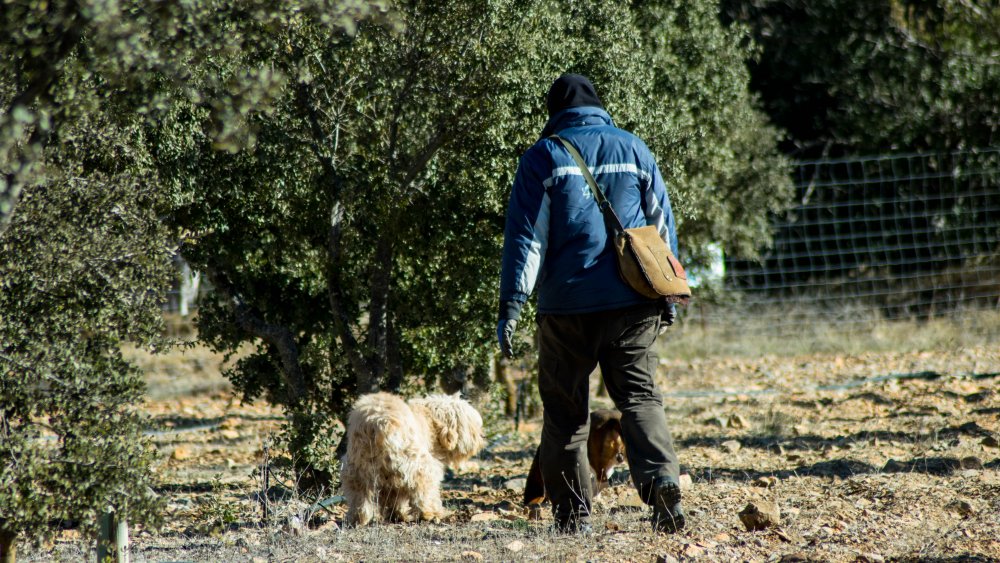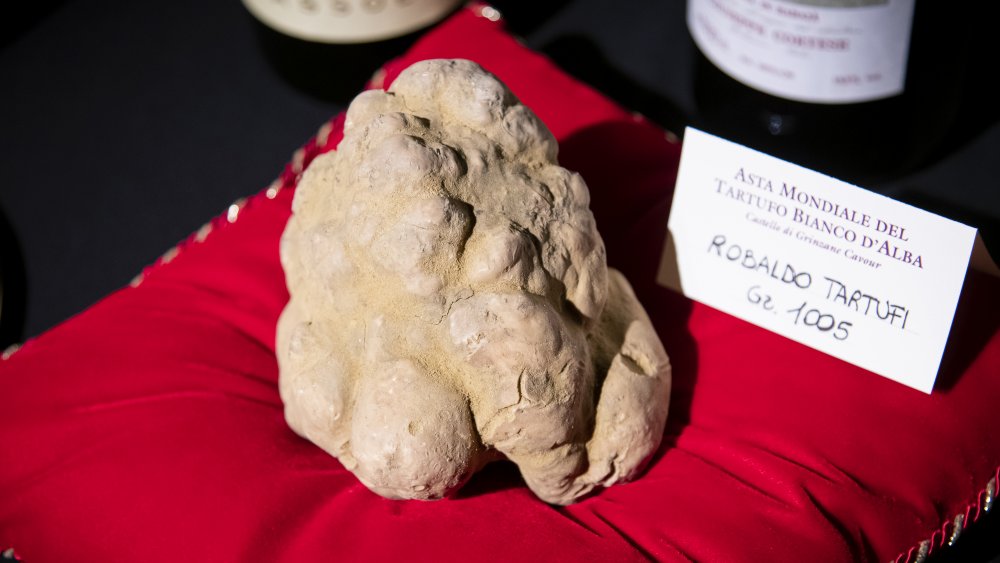Why Are Truffles So Expensive?
They're usually served in paper-thin shavings, sitting atop a gently-flavored canvas of egg, pasta, or risotto. They smell earthy and musky, and even with an average 8 to 10 grams per serving, they can light up a dish like no other, turning what could already be a mouthwatering appetizer or entree into a worthy offering that would please the gods.
They may not look like much, but to chefs and gourmets around the world, truffles are the diamonds of gastronomy. And like their namesakes, truffles are not cheap, with the Tuber Aestivum or summer black truffle coming in at just under $400 per pound, and the Tuber Uncinatum or Burgundy Black at nearly $1000 per pound (via Truffle.farm). On top of the truffle pyramid are the Tuber Melanosporum or Perigord, which price at just over $1,500 per pound, and the Tuber Magnatum or Alba white truffle at more than $4,500 per pound.
How do truffles grow?
Truffles may be similar to mushrooms, but they are much, much more high maintenance. In order to thrive, truffles need to be in proximity to — and able to enter into a mutually beneficial relationship with — a tree of its choice. As Boston Magazine puts it, truffles take sugars from a tree's roots, and in return delivers other nutrients from the soil to its tree partners. Truffles are also fussy, as they're only interested in partnering up with oak, hazel, poplar, beech, and pine trees.
The need to live in an ecologically perfect balance makes truffles next to impossible to cultivate. Truffles need their trees, and both need to live off the microbes and nutrients from the soil around them. Most of the world's most prized truffles that are consumed today are found in the same regions they have been growing in for millions of years — in European countrysides.
Once they're ready to be discovered, there is a small window of opportunity to track the truffles down, pack them up, and send them to restaurants around the world. Because they can't be cultivated, chefs and distributors can only wait for truffle season to come around. Each of the best-loved varieties has its own season — Burgundys can be found from September through February, winter blacks grow from November through March, and the Alba white truffles grow from October through December (via CNBC).
Truffles are very difficult to find
Truffles may be a challenge to grow, but they are even more of a challenge to find. Because truffles like hiding in dark, moist places close to their partner tree's roots, they are only discoverable by animals with a keen sense of smell.
Dogs are now preferred over pigs as truffle hunters because they don't rip up the countryside the way pigs do (via Modern Farmer). Hunters can also train dogs not to eat the truffle. This is important because a truffle's scent contains the same pheromone that is carried by male pigs, making them especially irresistible to female hogs (via BBC). As Modern Farmer puts it, a truffle hunter may not be keen to fight a hog who is as interested in eating the truffle as the hunter is to keep it away from him.
Hunters need time (and luck) to find gourmet diamonds
There is another strategic reason that truffle hunters use dogs instead of pigs to hunt down the valuable tubers. Truffle hunters guard their territories with great care, and they don't want competitors to know where the best truffles might be found. Hunters stick out like a sore thumb if they go out with their pigs; they are less obvious if they look like they are hanging out with their dogs for early dawn or late evening walks.
But even if a truffle hunter thinks he's operating in the right spot, he also needs to be in the area at the right time. Visnja Prodan, a Croatian truffle hunter, underscores the challenges of tracking down the elusive tubers; he says, "Sometimes the dogs will go to the same places for eight or nine weeks and won't find anything. But then on the 10th week they'll locate a nice white truffle. The reason for this is that the truffle wasn't ready yet and didn't emit its smell that the dogs picked up."
Truffles have a unique aroma that mimic pheromones
Once the tubers have been discovered, hunters literally have just days to sell them to a distributor and for that distributor to sell them to restaurants. It takes about four days for the gas that makes truffles an easy find for dogs and pigs, and irresistible to the humans consuming them, to dissipate. And the aroma is what makes the truffle what it is; The New York Times says truffles are attractive to us because their scent mimics that of mammalian reproductive pheromones.
Without that aroma, the truffles aren't anything to write home about. But when they are at their best, truffles command record-breaking prices at global auctions. During the 20th Anniversary of the Alba White Truffle World Auction in 2019, a 1 kilo, 5-gram truffle sold for an eye-watering $133,000. The proceeds for that auction is usually donated to charity (via Fine Dining Lovers).
